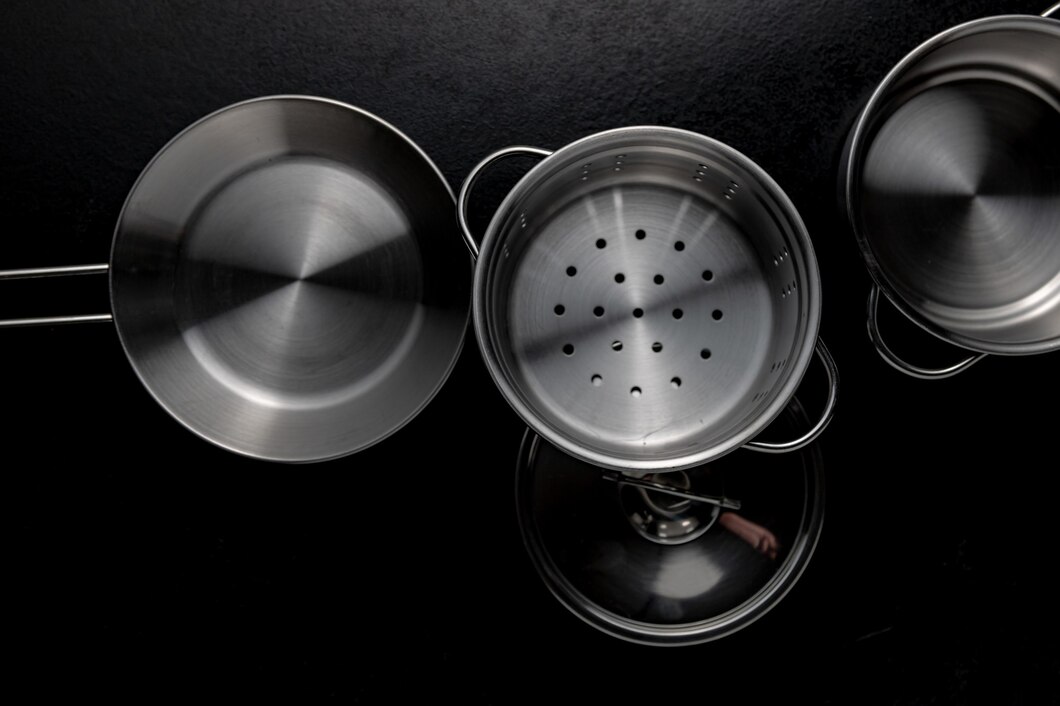The debate between non-stick and stainless steel cookware has long been a topic of discussion among home cooks and professional chefs alike. Each type of cookware comes with its own set of advantages and considerations, making the choice a matter of personal preference and cooking style. Let’s delve into the characteristics of non-stick and stainless steel pans to help you decide what’s right for your kitchen.
Non-Stick Cookware:
1. Ease of Use:
Non-stick pans are renowned for their user-friendly nature. The slick coating ensures that food slides effortlessly off the surface, making them ideal for cooking delicate items like eggs and pancakes without sticking.
2. Low-Fat Cooking:
The non-stick coating reduces the need for excessive oil or butter, promoting healthier cooking options. It’s an excellent choice for those aiming to reduce their fat intake without sacrificing flavor.
3. Quick Cleanup:
Cleaning non-stick pans is generally a breeze. Most food residues can be easily wiped away with a gentle sponge, requiring less effort and time in the kitchen sink.
4. Versatility:
Non-stick pans excel in cooking tasks that demand precision and finesse. They are particularly suitable for dishes that require gentle handling and where food sticking is a concern.
5. Temperature Sensitivity:
Non-stick coatings can be sensitive to high temperatures. Excessive heat can lead to the breakdown of the coating over time, so it’s essential to follow recommended temperature guidelines.
Stainless Steel Cookware:
1. Durability:
Stainless steel pans are renowned for their durability and longevity. They can withstand high temperatures and are less prone to scratches or wear, making them a robust choice for a long-term investment.
2. Versatility at High Temperatures:
Stainless steel excels at high-heat cooking methods like searing and browning. It’s an excellent choice for creating flavorful crusts on meats and achieving a wide range of cooking techniques.
3. Even Heating:
Stainless steel pans offer excellent heat distribution, ensuring that your food cooks evenly. This makes them versatile for a variety of cooking styles and techniques.
4. Compatibility with Utensils:
Stainless steel pans are compatible with a variety of utensils, including metal ones. You can use metal spatulas and spoons without worrying about damaging the surface.
5. Long-Term Investment:
While stainless steel cookware often comes with a higher upfront cost, it’s a durable and long-lasting investment that can withstand the test of time when properly cared for.
Choosing What’s Right for You:
Consider Your Cooking Style:
- If you enjoy delicate dishes and low-fat cooking, a non-stick pan may be your go-to choice.
- If you love high-heat cooking methods and desire durability, stainless steel might be more fitting.
Maintenance Preferences:
- Non-stick pans offer quick and easy cleanup.
- Stainless steel pans may require a bit more effort but are resilient to scratches and wear.
Investment Perspective:
- Non-stick pans can be more budget-friendly initially.
- Stainless steel pans may come with a higher upfront cost but offer long-term durability.
Ultimately, the choice between non-stick and stainless steel cookware depends on your cooking preferences, lifestyle, and budget. Many kitchens feature a combination of both types to cater to different cooking needs. Whether you prefer the slick ease of non-stick or the durability of stainless steel, both options bring their unique qualities to the kitchen, enhancing your culinary experience in their own ways.








